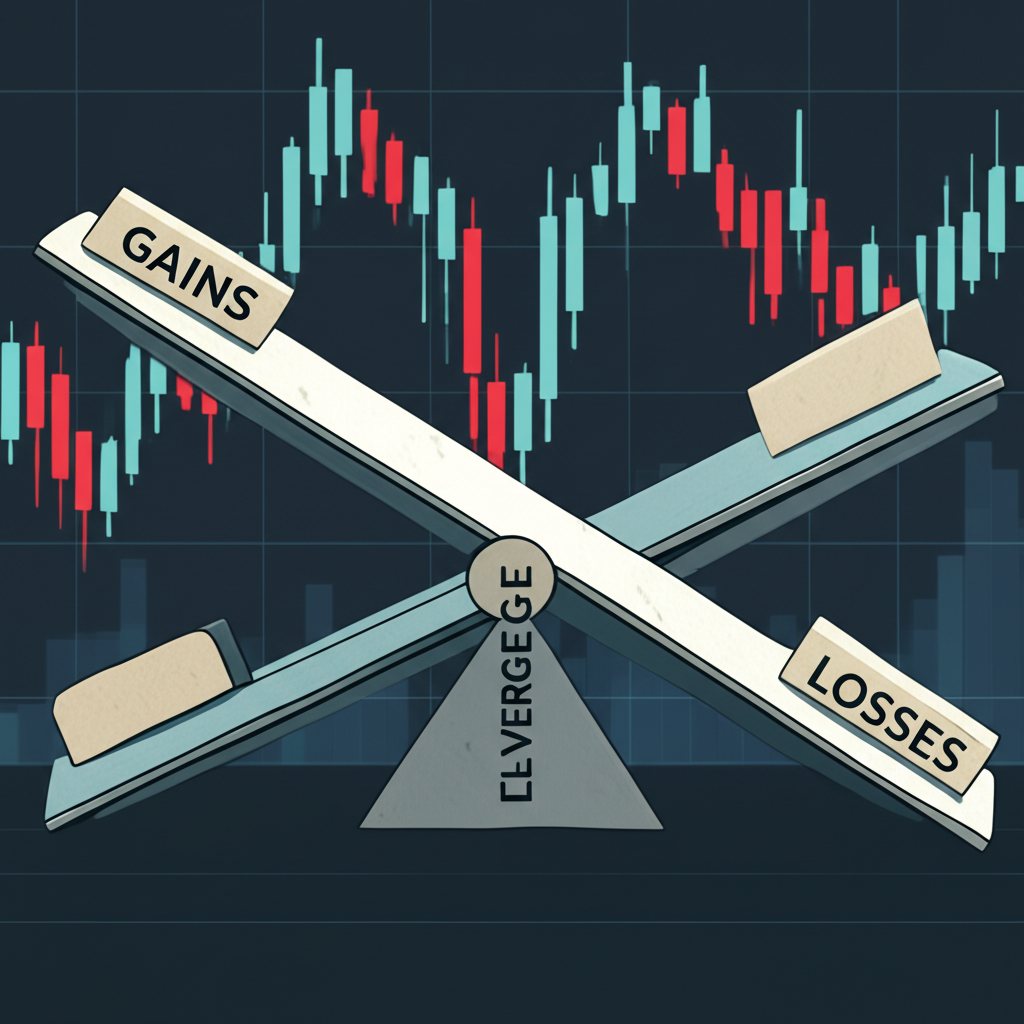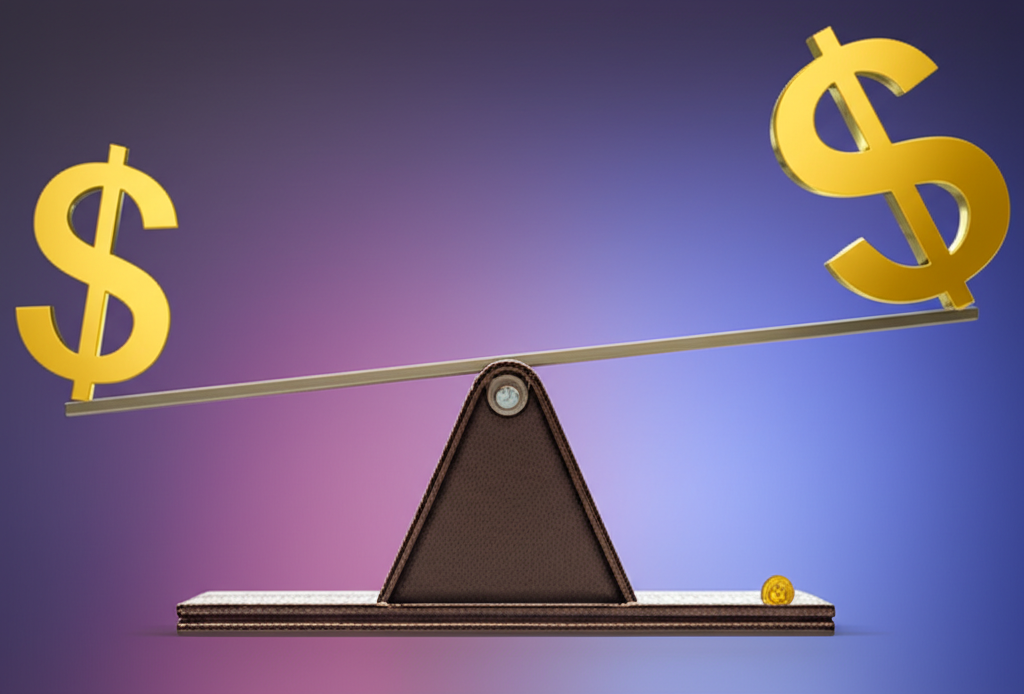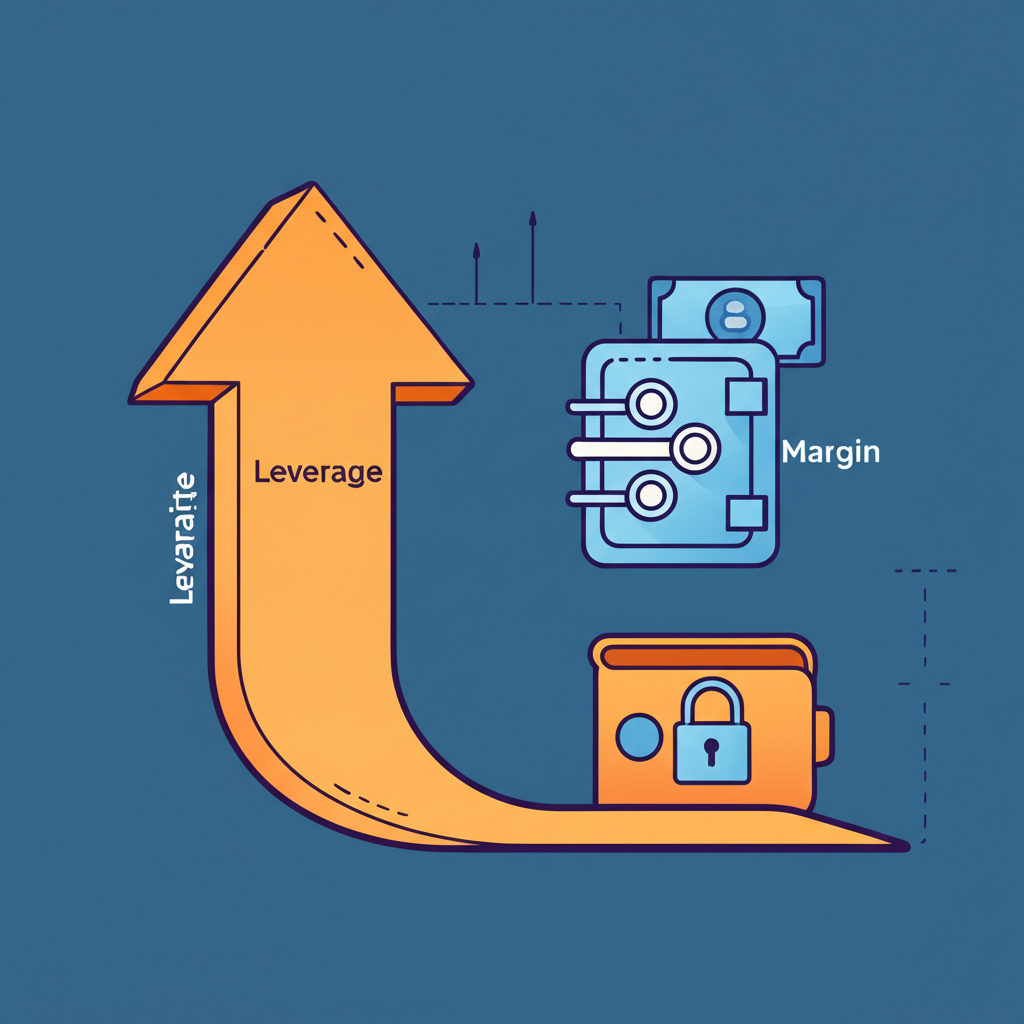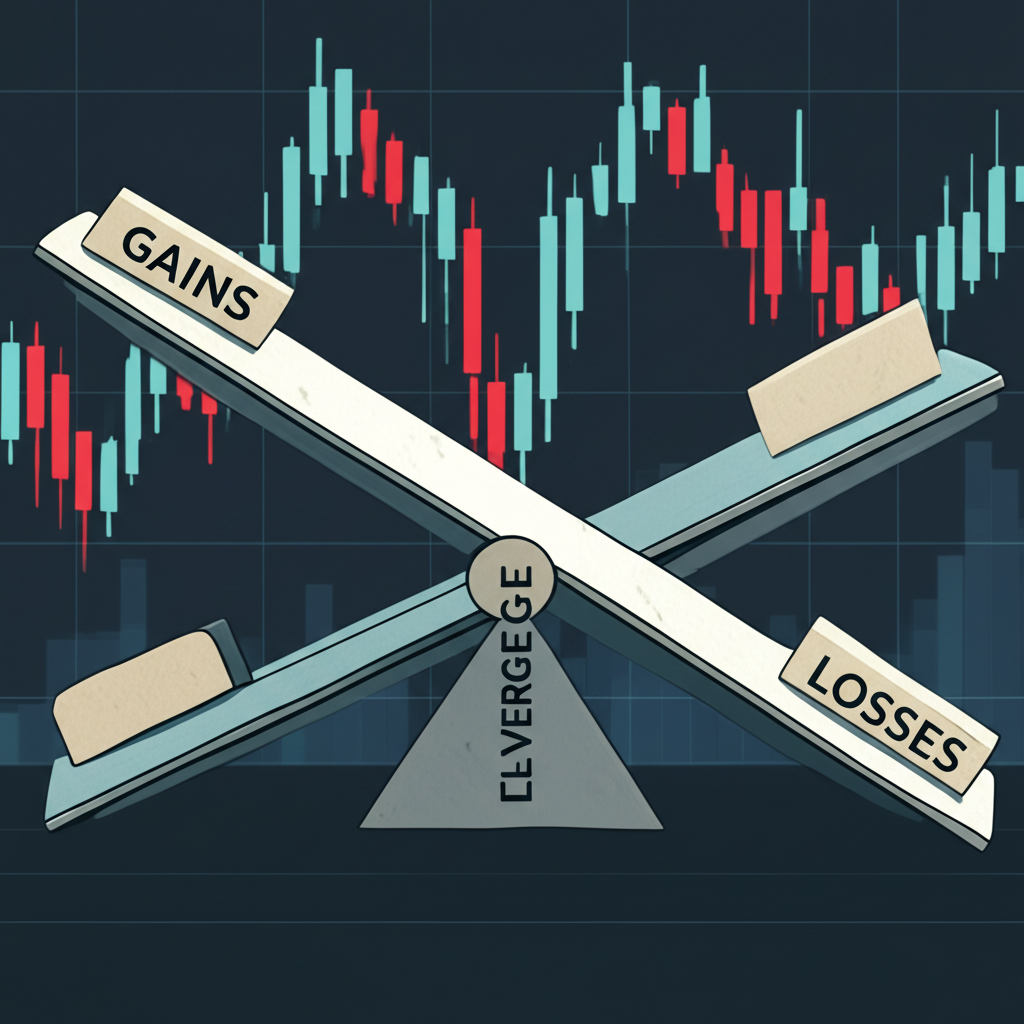Introduction: Unlocking the Power of Leverage in Forex Trading

The foreign exchange market, or forex, stands as the largest and most liquid financial market in the world, where currencies are traded around the clock. At the heart of its widespread appeal lies a powerful mechanism: leverage. For newcomers, it can appear both enticing and intimidating—a tool that enables outsized returns with minimal upfront capital, yet one that equally exposes traders to amplified risks. Far from being just a technical term, leverage shapes the very foundation of how traders engage with currency pairs. It transforms modest accounts into vehicles capable of controlling substantial positions, but without proper understanding and caution, it can also lead to swift setbacks. This comprehensive guide breaks down everything you need to know about leverage in forex—from its core mechanics and strategic advantages to the pitfalls that can derail even experienced traders—offering a clear roadmap for using it wisely in real-world trading scenarios.
What Exactly is Leverage in Forex? A Clear Definition

In simple terms, leverage in forex is the ability to trade a large position using only a fraction of your own money, with the remainder effectively borrowed from your broker. This borrowed capital allows traders to gain exposure to major currency movements without needing significant equity in their account. Imagine being able to control a $100,000 trade with just $1,000 of your own funds—that’s the power of leverage at work. It functions like a force multiplier, dramatically increasing market access and potential returns. Because of this, leverage has become a defining feature of retail forex trading, making it feasible for individuals to participate meaningfully in a market once dominated by large institutions. However, while it opens doors, it also demands respect; the same mechanism that boosts gains can accelerate losses just as quickly.
Leverage vs. Margin: Understanding the Dynamic Duo

Though often used interchangeably, leverage and margin are two sides of the same coin—related, but not identical. Leverage refers to the ratio that determines how much you can trade relative to your capital. For example, 1:100 leverage means every dollar in your account can control $100 in the market. Margin, on the other hand, is the actual amount of your own funds that must be set aside to open and maintain a leveraged trade. It acts as a security deposit, ensuring you have skin in the game. If you’re trading with 1:100 leverage, your margin requirement is just 1% of the total position size. The relationship is inverse: higher leverage reduces the margin needed, but also increases sensitivity to price swings. Think of margin as the key that unlocks leverage—without it, you can’t access borrowed funds. For a detailed explanation of how margin works in practice, Investopedia offers a thorough breakdown of margin mechanics in trading.
Here’s a quick comparison:
| Feature | Leverage | Margin |
|---|---|---|
| Definition | Borrowed capital to amplify trading size. | Trader’s capital required as collateral. |
| Expressed as | A ratio (e.g., 1:50, 1:100). | A percentage of the total trade value. |
| Impact on Capital | Multiplies trading power. | Locks up a portion of your capital. |
| Relationship | Higher leverage means lower margin required. | Necessary to open a leveraged position. |
How Does Leverage Work in Forex? Step-by-Step Examples

To truly grasp how leverage functions, it helps to see it in action through real-world examples. The concept may seem abstract at first, but once broken down, its mechanics become clear and tangible. Let’s walk through how different leverage ratios translate into actual trading power and risk exposure.
Deconstructing Leverage Ratios (e.g., 1:100, 1:500)
Leverage is typically expressed as a ratio, such as 1:50 or 1:500, indicating how much market exposure you get per unit of your own capital.
- 1:50 Leverage: Each dollar in your account controls $50 in the market. To open a $10,000 position, you’d need $200 in margin ($10,000 ÷ 50).
- 1:100 Leverage: Every dollar controls $100. The same $10,000 trade requires only $100 in margin.
- 1:500 Leverage: Each dollar controls $500. That same $10,000 position now needs just $20 in margin.
As the numbers show, higher leverage reduces the amount of your own money required to enter a trade, enabling larger positions with minimal equity. But this convenience comes at a cost: increased volatility exposure and a thinner buffer against adverse moves.
Calculating Profit and Loss with Leverage: A Practical Walkthrough
One of the most critical aspects of leverage is how it scales both profits and losses. Let’s illustrate this with a realistic scenario:
Scenario: You have a $1,000 trading account and use 1:100 leverage.
- Available Capital: $1,000
- Leverage: 1:100
- Maximum Trading Power: $1,000 x 100 = $100,000
You decide to go long on one standard lot (100,000 units) of EUR/USD. With 1:100 leverage, the margin required is $1,000 (1% of $100,000). Now, suppose the pair moves 100 pips.
- If EUR/USD moves 100 pips in your favor:
- Each pip on a standard lot is worth approximately $10.
- Your profit: 100 pips × $10 = $1,000.
- This doubles your account balance from $1,000 to $2,000—a 100% return from a relatively small price shift.
- If EUR/USD moves 100 pips against you:
- Your loss: 100 pips × $10 = $1,000.
- Your entire account is wiped out, triggering a margin call or automatic stop-out.
This example highlights the double-edged nature of leverage. A modest 1% move in the market results in either a full account gain or total loss—proof that leverage doesn’t just increase opportunity; it intensifies consequences.
The Advantages of Using Leverage in Forex Trading
Despite the risks, leverage remains a cornerstone of forex trading for good reason. When used thoughtfully, it offers several strategic benefits that enhance a trader’s flexibility and potential.
- Increased Capital Efficiency: Leverage allows traders to deploy only a fraction of their capital per trade, leaving the rest available for diversification or risk buffers. This efficiency is especially valuable for those managing multiple positions or seeking to hedge exposures.
- Potential for Magnified Profits: In a market where currencies often move in small increments, leverage turns tiny fluctuations into meaningful gains. A 0.5% move can generate a 50% return on margin with 1:100 leverage, making it possible to achieve substantial results even in low-volatility conditions.
- Accessibility: Without leverage, most individual traders couldn’t afford to trade meaningful lot sizes. By lowering the entry barrier, leverage democratizes access to the forex market, allowing participation regardless of initial capital size.
- Diversification Opportunities: With less capital tied up per position, traders can spread risk across multiple currency pairs—such as EUR/USD, GBP/JPY, and AUD/CAD—reducing reliance on any single trade and improving overall portfolio resilience.
The Critical Risks of Trading with Leverage: What You Must Know
For every benefit, there is a corresponding risk—and in the case of leverage, those risks can be severe. Many traders focus solely on the profit potential, only to underestimate how quickly things can go wrong when the market turns.
Magnified Losses and the Margin Call
The same multiplier effect that boosts profits applies equally to losses. When a trade moves against you, the loss is calculated based on the full position value, not just your margin. As losses accumulate, your account equity drops. Once it falls below the minimum level required to maintain open positions, your broker issues a margin call—an urgent request to deposit more funds. If you fail to respond, the broker will automatically close your trades, often at the worst possible moment. This forced liquidation can lock in heavy losses and leave you with little control over the outcome. In fast-moving markets, such as during major economic announcements, this process can happen within seconds.
Over-leveraging: The Path to Account Wipeout
One of the most common mistakes among new traders is over-leveraging—using excessively high ratios or opening oversized positions relative to account size. For example, using 1:500 leverage on a $500 account to control $250,000 in currency exposes you to extreme volatility. Even a 20-pip move could erase your margin. The psychological lure of “getting rich quick” often overrides sound judgment, leading to emotional trading, poor decision-making, and ultimately, account depletion. The key isn’t just knowing how much leverage is available—it’s understanding how much you should actually use.
Choosing the Right Leverage Ratio for Your Trading Style
There is no universal “best” leverage ratio. The ideal level depends on your experience, risk tolerance, account size, and trading strategy. Making an informed choice can mean the difference between sustainable growth and rapid failure.
What is a “Good” Leverage in Forex? Factors to Consider
A responsible leverage ratio aligns with your personal trading profile. Consider these critical factors:
- Experience Level: New traders should start conservatively, using ratios like 1:10 or 1:30. This allows room to learn from mistakes without catastrophic consequences. Seasoned traders may use higher leverage, but usually with strict risk controls in place.
- Capital Size: Smaller accounts may rely on higher leverage to open viable positions, but this increases vulnerability. Larger accounts can afford to use lower leverage while still achieving meaningful exposure.
- Risk Tolerance: Be honest about how much you’re willing to lose. If a 10% drawdown keeps you awake at night, high leverage isn’t suitable. Conservative traders often cap leverage at 1:20 or lower.
- Trading Strategy: Scalpers who hold trades for minutes may use tighter stop-losses and higher leverage due to reduced exposure time. Swing traders, who ride trends over days or weeks, typically prefer lower leverage to withstand market noise.
- Stop-Loss Strategy: Always define your exit point before entering a trade. A well-placed stop-loss limits potential loss, giving you more flexibility in leverage selection. Without one, even low leverage can become dangerous.
Leverage for Different Account Sizes: What Leverage is Good for $100?
Managing a small account—say, $100—requires extra caution. While high leverage (like 1:500 or 1:1000) might seem necessary to make a dent in the market, it dramatically increases the chance of a margin call.
- With $100 and 1:100 leverage: You can control up to $10,000. Opening a micro lot (1,000 units) of EUR/USD requires $10 in margin. A 100-pip move yields a $10 profit or loss—manageable if risk is controlled.
- With $100 and 1:500 leverage: You can control $50,000. A mini lot (10,000 units) requires only $20 in margin, but a 100-pip loss equals $100—the entire account gone in one move.
For a $100 account, moderate leverage (1:50 to 1:200) and micro-lot trading are strongly advised. Prioritize consistency and education over aggressive returns. The goal should be survival and skill-building, not immediate profits.
Comparing Leverage Ratios: 1:100 vs. 1:500
To see the practical impact, let’s compare two commonly offered leverage levels:
| Feature | 1:100 Leverage | 1:500 Leverage |
|---|---|---|
| Margin for $10,000 Position | $100 (1%) | $20 (0.2%) |
| Available Free Margin (Account $1,000) | $900 | $980 |
| Profit/Loss per Pip (Standard Lot) | ~$10 | ~$10 |
| Market Movement to Wipe Out Margin | 100 pips (assuming $100 margin) | 20 pips (assuming $20 margin) |
| Risk Level | Moderate | High |
The data speaks clearly: 1:500 leverage requires far less upfront capital but exposes you to much faster liquidation risk. A mere 20-pip adverse move can trigger a stop-out, whereas with 1:100, you have five times the breathing room. This makes high leverage suitable only for traders with advanced risk management systems and a deep understanding of market dynamics.
Leverage and Forex Regulations: What Traders Need to Know
Leverage isn’t the same everywhere—it’s heavily influenced by financial regulations designed to protect retail investors from excessive risk. Different regions impose strict limits on maximum leverage for individual traders.
- In the United States, the National Futures Association (NFA) caps leverage at 1:50 for major currency pairs.
- In Europe, the European Securities and Markets Authority (ESMA) limits retail traders to 1:30 on major pairs.
- Other jurisdictions, including certain offshore or emerging markets, may offer leverage as high as 1:500 or even 1:1000.
These rules exist for a reason: to prevent inexperienced traders from taking on unsustainable risk. Reputable brokers comply with local regulations, and many offer tiered leverage based on account type or trader experience. Always verify your broker’s regulatory status—information from bodies like the FCA (UK) or ASIC (Australia) can help confirm compliance and safety.
Common Misconceptions and Psychological Pitfalls of Leverage
Beyond the numbers, leverage carries psychological weight that can distort judgment. Many traders fall into predictable traps that undermine their long-term success.
- Misconception: Higher leverage equals higher profits. Leverage doesn’t create profit—it amplifies outcomes. A losing strategy with high leverage simply leads to faster losses. Profitability depends on analysis, timing, and discipline, not just position size.
- Psychological Pitfall: Overconfidence. Controlling a $50,000 position with $100 can inflate ego, leading traders to believe they’ve mastered the market. This overconfidence often results in skipping analysis, ignoring stop-losses, and taking reckless trades.
- Psychological Pitfall: Fear of Missing Out (FOMO). Seeing others post large gains from leveraged trades can create pressure to replicate those results, even if it contradicts your strategy or risk profile.
- Misconception: Leverage is a debt. Unlike a loan, you don’t owe money beyond your account balance in most cases. Regulated brokers typically offer negative balance protection, meaning you can’t lose more than you deposit. Leverage is better understood as temporary trading power, not a financial obligation.
- Psychological Pitfall: The “Gambler’s Fallacy.” After a string of losses, some traders double down with bigger, more leveraged bets to “recover” quickly. This emotional response often leads to further losses and account collapse.
Recognizing these mental traps is just as vital as understanding margin calculations. A disciplined mindset, adherence to a trading plan, and emotional control are essential tools for navigating the high-stakes world of leveraged trading.
Conclusion: Mastering Leverage for Sustainable Forex Trading
Leverage is a defining feature of forex trading—offering unmatched access to global markets with minimal capital. It empowers traders to turn small price movements into meaningful gains, but it also demands caution and discipline. The same force that multiplies profits can just as easily erase accounts when misused. Success in forex doesn’t come from chasing maximum leverage; it comes from understanding its mechanics, respecting its risks, and applying sound risk management. By choosing appropriate leverage levels, using stop-loss orders consistently, and maintaining a long-term perspective, traders can harness this powerful tool responsibly. Ultimately, sustainable trading is not about how much you can control—it’s about how well you control what you have.
What does 1 to 500 leverage mean in forex?
1:500 leverage means that for every $1 of your own capital, your broker allows you to control $500 in the market. This significantly amplifies your trading power. For example, with $100, you could control a position worth $50,000.
What is considered a good leverage ratio for beginners in forex?
For beginners, a lower leverage ratio is generally recommended to mitigate risk while learning. Ratios like 1:10, 1:20, or 1:30 are often considered good starting points. This allows for smaller position sizes and provides more room for error without rapidly depleting your account.
How does leverage affect my potential profits and losses in forex trading?
Leverage directly magnifies both your potential profits and losses. If a trade moves in your favor, your gains are amplified relative to your initial margin. Conversely, if a trade moves against you, your losses are also amplified, potentially leading to a margin call or quick depletion of your trading account.
Can you explain the difference between leverage and margin in forex trading?
Leverage is the ratio that allows you to control a larger trade size than your actual capital (e.g., 1:100). Margin is the actual amount of your own capital that is required and held by your broker as a deposit to open and maintain a leveraged position. Margin is a component of using leverage.
What are the risks associated with using high leverage in forex?
The primary risk of high leverage is magnified losses. Even small adverse market movements can lead to significant losses relative to your account equity, potentially resulting in a margin call where your broker automatically closes your positions. High leverage also encourages over-trading and can quickly wipe out an entire trading account.
How can I choose the best leverage for my $100 forex trading account?
For a $100 account, choosing leverage is critical. While higher leverage (e.g., 1:200 to 1:500) might seem necessary to open meaningful positions, it drastically increases risk. It’s generally advisable to:
- Start with moderate leverage (e.g., 1:50 to 1:200).
- Trade only micro-lots (1,000 units).
- Implement strict risk management, risking no more than 1-2% of your account per trade.
- Focus on learning and capital preservation rather than aggressive growth.
Are there any regulations on leverage ratios in different countries?
Yes, leverage ratios are heavily regulated. For instance, in the US, major currency pairs are typically limited to 1:50 leverage for retail traders by the NFA. In Europe, ESMA restricts leverage to 1:30 for major pairs. Other regions might permit much higher leverage. Always check the regulations of your broker’s jurisdiction.
What is a margin call, and how does it relate to leverage?
A margin call occurs when the equity in your trading account falls below the required margin to keep your open leveraged positions. Your broker will then ask you to deposit more funds to meet the margin requirement. If you fail to do so, your broker will automatically close some or all of your positions to prevent further losses, protecting both you and the broker from deeper debt.
Does higher leverage always mean higher risk?
Not necessarily *always*, but generally, yes. While higher leverage allows you to control larger positions, which inherently means higher potential profit or loss per pip, the actual risk depends on how you manage your position size and use stop-losses. A disciplined trader using high leverage on a small position with a tight stop-loss might be taking less risk than an undisciplined trader using low leverage on an oversized position with no stop-loss.
What is the minimum capital required to trade with leverage in forex?
The minimum capital required to trade with leverage can vary significantly among brokers. Some brokers allow you to open an account with as little as $50 or $100, especially with higher leverage options. However, it’s generally recommended to start with a more substantial amount, such as $500 or more, to allow for better risk management and to absorb potential initial losses without wiping out your account.

留言